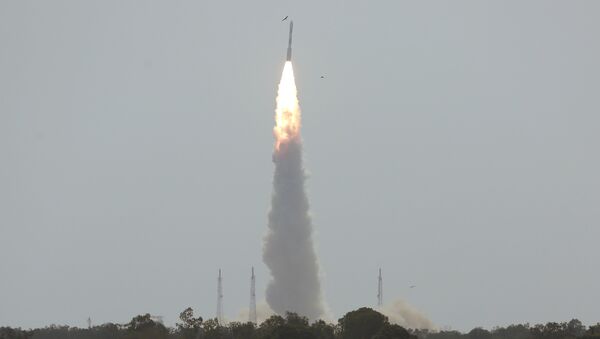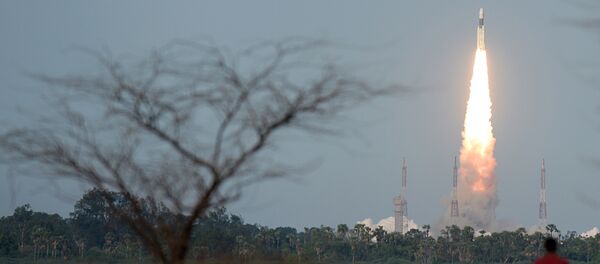New Delhi (Sputnik) — The Indian Space Research Organisation (ISRO) successfully placed its first Hyper-Spectral Imaging Satellite (HySIS) into the earth's orbit on Thursday in what is being termed as an 'excellent space asset' by the organization. The satellite will be used for a range of applications like agriculture, assessment of coastal zones and surveillance work for the Indian Armed Forces. Launched on the ISRO's PSLV-C43, all of the 31 satellites successfully separated within 1h 53min after lift-off.
READ MORE: Russia to Help India in its First Manned Space Mission
'Our duty is to mainly build the satellite which can precisely identify an object. The usage…we are not bothering. That depends on the users. Right now it is meant for Earth Observation missions. But after seeing the results, maybe….but it's not in our hands', K. Sivan, ISRO chief, replied to a question on whether HySIS could be used for anti-terror operations.
— Rajyavardhan Rathore (@Ra_THORe) November 29, 2018
— PIB India (@PIB_India) November 29, 2018
'HySIS is an earth observation satellite developed by ISRO. The mission life of the satellite is 5 years. The primary goal of HySIS is to study the earth's surface in visible, near infrared and shortwave infrared regions of the electromagnetic spectrum', an ISRO document reads.
READ MORE: India Successfully Conducts Crucial Test of Moon Mission-II Lander
Other than the HySIS, PSLV-C43 carried other payloads, including 23 micro-satellites from the US, and one micro-satellite each from Australia, Canada, Columbia, Finland, Malaysia, Netherlands, and Spain in the launch.



